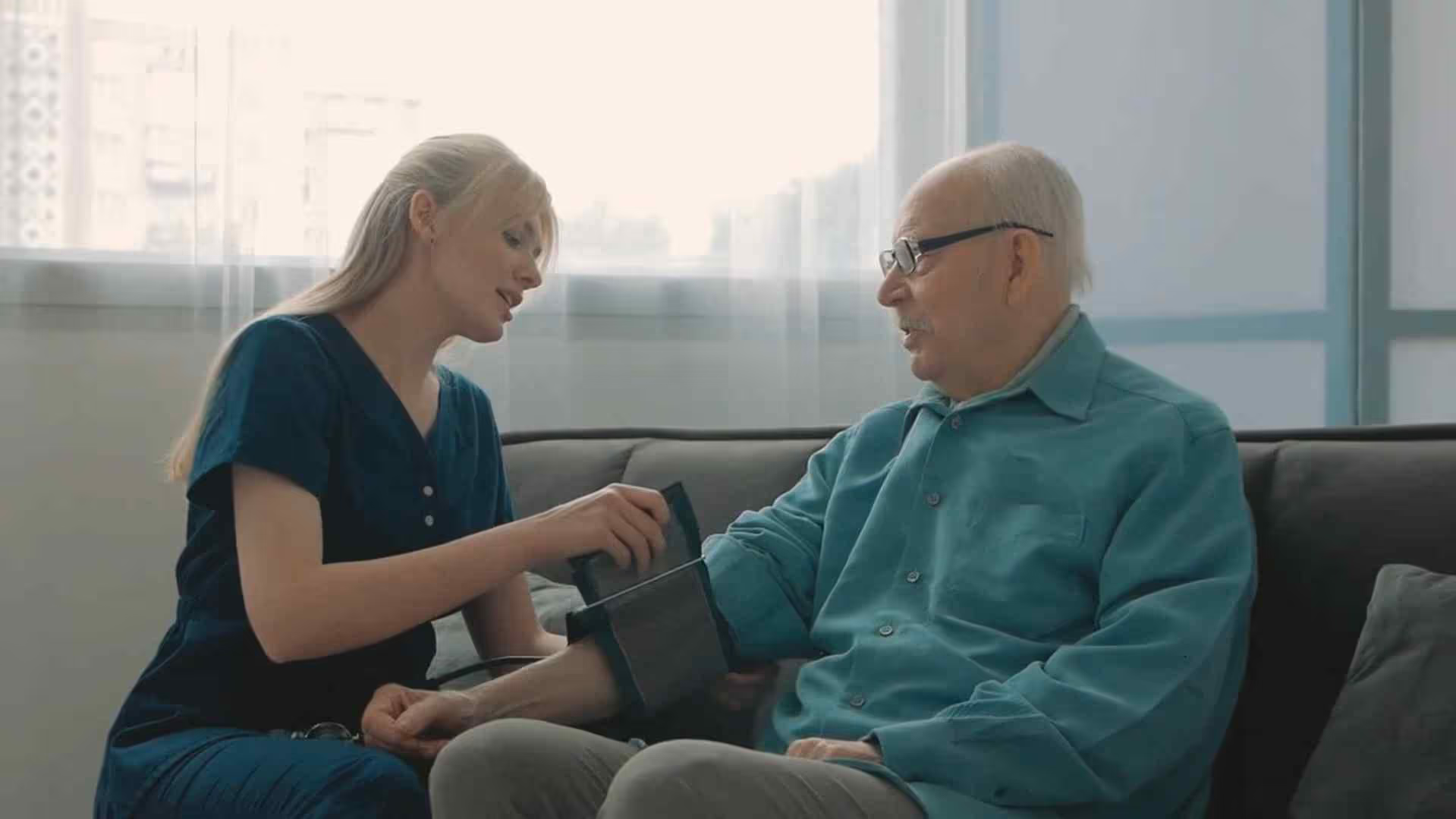How to identify and address caregiver burnout
April 2, 2025
Identifying Caregiver Burnout and Finding Effective Solutions


Introduction to Caregiver Burnout
Caregivers play a vital role in supporting loved ones with chronic illnesses, disabilities, or aging-related conditions. However, the demands of caregiving can lead to significant physical and emotional strain known as caregiver burnout. Understanding the symptoms, causes, and stages of burnout is essential for preventing and addressing this condition, which not only affects caregivers but also the quality of care they can provide.
Recognizing Symptoms and Causes of Caregiver Burnout

What are the symptoms and causes of caregiver burnout?
Caregiver burnout manifests as a profound state of physical, emotional, and mental exhaustion. This often stems from the overwhelming stress of providing care to others, and it can lead caregivers to neglect their own health and well-being.
Symptoms
The symptoms of caregiver burnout can vary widely, encompassing both emotional and physical aspects. Common indicators include:
- Emotional Exhaustion: Persistent fatigue and low energy levels.
- Social Withdrawal: Reduced engagement in social activities and isolation.
- Sleep Issues: Changes in sleep patterns, including insomnia or hypersomnia.
- Eating Changes: Fluctuations in appetite or unhealthy eating habits.
- Mental Health Effects: Increased feelings of anxiety, irritability, or hopelessness.
Furthermore, caregivers may experience physical symptoms such as headaches, body aches, and gastrointestinal issues.
Causes
Several factors contribute to caregiver burnout, including:
- Role Confusion: Difficulty separating personal responsibilities from caregiving roles.
- Lack of Support: A significant absence of emotional or practical support from friends, family, and community resources.
- Overwhelming Responsibilities: Juggling multiple roles, including work and caregiving for multiple family members.
- Financial Strain: The monetary burden that caregiving can impose, particularly if professionals are needed.
Statistics reveal that over 60% of caregivers report experiencing burnout, highlighting its prevalence among those tending to elderly or chronically ill individuals.
To combat burnout, it is crucial for caregivers to prioritize self-care, set manageable goals, and seek support from family, friends, or community groups.
Identifying the Signs of Caregiver Burnout

How Can You Identify Caregiver Burnout?
Recognizing caregiver burnout is essential to ensuring both the caregiver's health and the quality of care provided to loved ones. Several key signs can indicate that a caregiver is experiencing burnout:
- Overwhelming Fatigue: A constant state of tiredness that makes daily tasks feel daunting.
- Lack of Energy: Caregivers may notice a decreased ability to engage in activities they once found enjoyable.
- Sleep Disturbances: Difficulties in falling asleep or maintaining sleep can be early warning signs.
- Changes in Appetite: Significant weight loss or gain may occur as caregivers neglect their nutritional needs.
- Increased Irritability: Heightened frustration with both the care recipient and everyday situations is common.
- Feelings of Hopelessness: Caregivers may feel overwhelmed or believe that their situation won't improve.
- Withdrawal from Activities: A tendency to isolate oneself from social interactions or decline invitations can indicate stress levels.
Recognizing these signs early is crucial. If caregivers can identify burnout in its initial stages, they can implement strategies and seek support that may prevent progression to severe burnout.
Emotional issues, such as anxiety and depression, often accompany these signs. Therefore, caregivers are encouraged to reach out for assistance from family, friends, or healthcare professionals when they notice these warning signals.
Understanding the Stages of Caregiver Burnout

What are the stages of caregiver burnout?
Caregiver burnout typically progresses through several identifiable stages. It begins with the Honeymoon Period, where caregivers feel hopeful and eager to help. However, as the emotional and physical demands of caregiving increase, they often transition into the Increased Caregiving Challenges stage. Here, caregivers experience feelings of overwhelm and fatigue due to ongoing responsibilities.
Next, caregivers may encounter the Despair and Desperation stage. This phase is marked by signs of resentment and emotional exhaustion, where care recipients may feel that their efforts are insufficient. Caregivers may exhibit increased irritability and feel disconnected from their loved ones.
Further along in the progression, caregivers might face the Stress and Frustration stage, characterized by withdrawal from social interactions and diminished engagement in activities they once enjoyed. Eventually, those entrenched in burnout may reach a point of Burnout and Isolation, where they feel completely depleted and lose their sense of purpose. At this critical juncture, caregivers could develop Compassion Fatigue, hindering their ability to provide quality care.
To combat these stages, it’s essential to prioritize self-care and seek support through community resources or caregiver groups. Recognizing the signs early allows caregivers to implement strategies to manage their stress, ensuring both their well-being and that of their care recipients.
Effective Interventions for Managing Caregiver Burnout

What interventions can help in managing and preventing caregiver burnout?
To effectively manage and prevent caregiver burnout, several strategies can be implemented:
Share Responsibilities: Involving other family members and friends in caregiving tasks can greatly lighten the load on a single caregiver. This collaborative approach not only distributes work but also fosters a support network.
Join Support Groups: Connecting with others in similar situations through support groups offers invaluable emotional backing. These groups can help reduce feelings of isolation and provide insights from shared experiences.
Educate Yourself: Understanding the caregiving role nurtures feelings of competence and control. Gaining knowledge about the specific condition of the care recipient, available resources, and effective caregiving techniques can empower caregivers in their daily responsibilities.
Adopt a Healthy Lifestyle: Prioritizing physical health through regular exercise, adequate sleep, and a well-balanced diet can mitigate stress effects. Caregivers often overlook their health; therefore, taking proactive steps is essential.
Monitor Health: Regular check-ups and being mindful of medication intake can help caregivers take care of their physical and mental health, reducing the risk of burnout.
Recognize Signs of Stress: Paying attention to early signs of caregiver role strain—like emotional exhaustion, irritability, and cognitive challenges—allows for timely interventions, improving overall well-being.
Support systems
Supporting caregivers, whether through formal means or informal networks, is crucial. Here are some key components of effective support systems:
- Respite Care Services: Access to respite care options provides caregivers with necessary breaks, helping reduce stress levels and recharge.
- Family and Friends: Encouraging caregivers to draw upon their social circles not just for assistance but emotional support can help mitigate feelings of loneliness.
- Professional Counseling: Engaging with healthcare professionals or therapists can offer caregivers strategies to cope with stress and emotional challenges effectively.
Implementing these interventions and nurturing a supportive environment is essential to combat caregiver burnout.
Comparing Caregiver Burnout and Compassion Fatigue
What are the differences between caregiver burnout and compassion fatigue?
Caregiver burnout and compassion fatigue are both forms of stress affecting caregivers, yet they arise from different situations and manifest distinct symptoms.
Caregiver Burnout
- Definition: Occurs from long-term stress and demands associated with caregiving, leading to emotional, physical, and mental exhaustion.
- Symptoms: Includes feelings of frustration, irritability, fatigue, and a general sense of being overwhelmed by the caregiving role. Notably, caregivers may still feel empathy towards their loved ones despite experiencing burnout.
- Onset: Develops gradually over time, as responsibilities and stressors accumulate.
Compassion Fatigue
- Definition: Specifically related to the emotional toll of witnessing trauma or suffering in care recipients. It can affect a caregiver's ability to empathize with the individual they are caring for.
- Symptoms: Characterized by emotional numbness, detachment, and a diminished capacity for empathy, which can occur more suddenly than burnout.
- Onset: Often linked to a specific event or realization, leading to a rapid decline in emotional connection.
Impact on caregiving quality
Both caregiver burnout and compassion fatigue can significantly impact the quality of care. Caregivers experiencing burnout may struggle to fulfill their roles effectively due to exhaustion, which can lead to neglect of personal care or the care of their loved one. In cases of compassion fatigue, the connection between the caregiver and the care recipient suffers, undermining the emotional support that is often critical to the care process.
Recognizing the signs of each condition is crucial for caregivers to seek timely help and maintain a healthy caregiving environment.
Emotional and Physical Challenges in Caregiving
What emotional and physical challenges do caregivers face?
Caregivers often encounter a multitude of emotional and physical challenges that can profoundly impact their well-being. High levels of stress and anxiety are common as caregivers juggle multiple responsibilities while feeling guilty about their capacity to provide care. This emotional turmoil can lead to burnout and depression if not addressed.
Physically, the demands of caregiving can result in significant exhaustion and sleep deprivation. Many caregivers face the risk of chronic health conditions due to neglecting their own health needs while focusing on their loved ones. Injuries from lifting or assisting with mobility may also occur if proper techniques are not utilized, underscoring the importance of understanding safe caregiving practices.
Moreover, time management poses a challenge, trapping caregivers in a cycle of isolation as they struggle to balance personal needs against their caregiving duties. Financial strain associated with caregiving responsibilities can exacerbate these issues, while the loss of personal identity may leave caregivers feeling disconnected from themselves.
The Impact on Health
The cumulative effect of these challenges results in a decline in both physical and mental health for many caregivers. Persistent fatigue, mood swings, and withdrawal from social interactions are common signs of caregiver burnout. If unaddressed, these symptoms can spiral into more severe health issues, reinforcing the need for caregivers to seek support and prioritize self-care.
In summary, acknowledging the emotional and physical challenges faced by caregivers is essential for both their immediate well-being and the quality of care they can provide.
Coping Mechanisms and Self-Care Strategies for Caregivers

What coping mechanisms and self-care advice exist for caregivers?
Caregivers often face unique challenges that can lead to exhaustion, making self-care a priority. To maintain physical and emotional well-being, caregivers should consider the following strategies:
- Nutrition: Eating a balanced diet helps sustain energy levels and overall health. This includes plenty of fruits, vegetables, whole grains, and lean proteins.
- Exercise: Regular physical activity alleviates stress and improves mood. Even short walks or gentle stretches can make a significant difference.
- Regular Health Checkups: Scheduling routine medical appointments ensures that caregivers stay on top of their health needs.
Recognizing early signs of stress is crucial. Caregivers should allow themselves breaks, whether it’s a short moment of quiet, a fun activity, or time away from caregiving responsibilities. Seeking support from family and friends can also alleviate feelings of isolation.
How to use effective coping techniques?
Effective communication plays a vital role in reducing caregiver stress. This includes:
- Talking It Out: Sharing feelings and experiences with other caregivers can provide solace and understanding.
- Setting Boundaries: Establishing limits on caregiving tasks helps prevent overwhelm and allows caregivers to focus on personal well-being.
- Seeking Professional Help: If feelings of burnout persist, consulting a therapist or counselor can offer valuable coping strategies.
By integrating these self-care and coping techniques, caregivers can enhance their resilience, ensuring they can continue to provide the care their loved ones need while taking care of themselves.
Addressing Caregiver Burnout for Sustainable Caregiving
Addressing caregiver burnout is critical for ensuring the health and well-being of both caregivers and those they support. By recognizing the signs of burnout early and implementing preventative strategies, caregivers can maintain their wellness and provide better care for their loved ones. Accessing resources and support networks can significantly alleviate the burdens of caregiving, allowing caregivers to thrive in their roles while safeguarding their physical and mental health. Caregivers play an invaluable role in society, and their health needs must be prioritized to sustain the irreplaceable care they provide.
References
- Causes and Symptoms of Caregiver Burnout | Called to Care
- Caregiver stress: Tips for taking care of yourself - Mayo Clinic
- Signs of Caregiver Burnout and How to Prevent It | VITAS Healthcare
- Caregiver Burnout: Symptoms and Treatment - Healthline
- Caregiver Stress and Caregiver Burnout - HelpGuide.org
- Finding Balance: 8 Tips for Avoiding Caregiver Burnout
- Caregiver Burnout: Signs, Causes, and How to Prevent It
- What Are The Stages Of Caregiver Burnout? - Kingston Healthcare
- Understanding Caregiver Burnout: Causes, Symptoms and Solutions
- Understanding And Addressing Caregiver Burnout - CarePatrol
























































































.jpeg)











































































































































































































.avif)























































.jpeg)

































































.jpeg)














.jpg)









































.jpeg)









































































.avif)




.avif)

















































.avif)









































































































































































